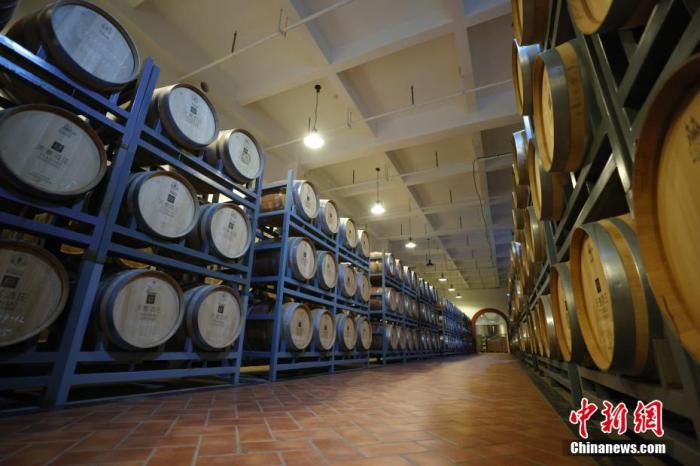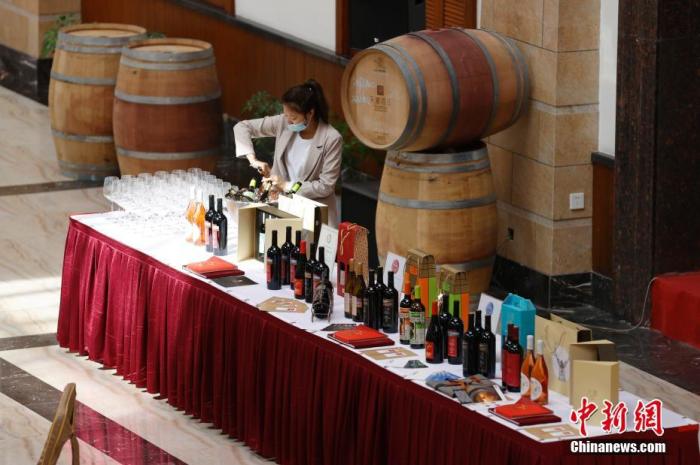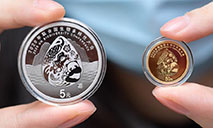NW China's Xinjiang "brewing" up a large wine industry
As one of China's major wine grape growing regions, northwest China's Xinjiang Uygur Autonomous Region is "brewing" to become a core region for high-end quality wines through the implementation of a top-level layout and policy support.

Photo shows a grape plantation at a winery in Xinjiang. (Photo/chinanews.com)
Xinjiang has a long history of grape growing. The grapevines discovered by archaeologists in 2003 in the Yanghai Cemetery, Turpan city, dating back to some 2,500 years ago, serves as the best demonstration. Both the climate and soil in Xinjiang are perfect for growing grapes. In the golden autumn, grapes in vineyards north and south of the Tianshan Mountains, green or purple, are as crystal clear as pearls.
"As one of the earliest grape cultivation regions and one of the birthplaces of wine in China, Xinjiang is blessed with natural conditions for grape growing. Thus, its wine grapes are of excellent quality. Xinjiang has abundant resources and a good foundation for wine brewing," said Zhang Shuo, deputy director of the Department of Commerce of Xinjiang.
Previously, Turpan mostly relied on fresh grapes and sultanas to compete in the market, meaning that the added value of the products was low. In recent years, the local industry has optimized its structure, forming a strategy in which grape-related products from the region are divided into three categories -- one-third will be sold as fresh food, one-third as dried grapes, and one-third used for winemaking.

Photo shows a cellar at a winery. (Photo/chinanews.com)
As a result, investors in the wine industry can reap the benefits of high-quality raw materials, while grape growers are able to reap higher returns.
This win-win model has made Xinjiang a hotbed for investment in the wine industry. Statistics indicated that by the end of 2020, Xinjiang's wine grape cultivation area had grown to 330,000 mu (about 22,000 hectares), ranking second in China. Wine grape production exceeded 210,000 tonnes, ranking first in China.
Xinjiang, which is home to 134 wineries, has gradually formed four major wine-producing areas in the northern Tianshan Mountains, the Yili Valley, the Yanqi Basin, and the Tuha Basin.

A staff member at a winery opens a bottle of red wine. (Photo/chinanews.com)
It was reported that Xinjiang has made the wine industry one of the region’s "10 industries" to be developed during the next five years, and relevant development plans have also been formulated.
According to the plans, by 2025, Xinjiang's wine grape cultivation area will reach 1 million mu, and its annual wine production will reach 700,000 kilolitres. Meanwhile, revenue from wine cultivation, processing and related industries such as cultural tourism and catering will exceed 80 billion yuan ($12.42 billion).
Photos
Related Stories
- Xinjiang farmer-painters popularize ancient culture through canvas
- Technology boosts high-quality agriculture development in Xinjiang
- Xinjiang cotton farmers refute "forced labor" rumors
- Fashion show held in cotton field in Xinjiang
- Xinjiang "princess beaver" tells eco-protection efforts of young Chinese at COP15
- Xinjiang government refutes Western lies about human rights
Copyright © 2021 People's Daily Online. All Rights Reserved.










